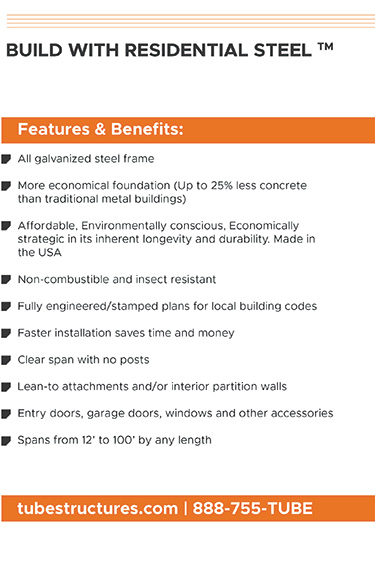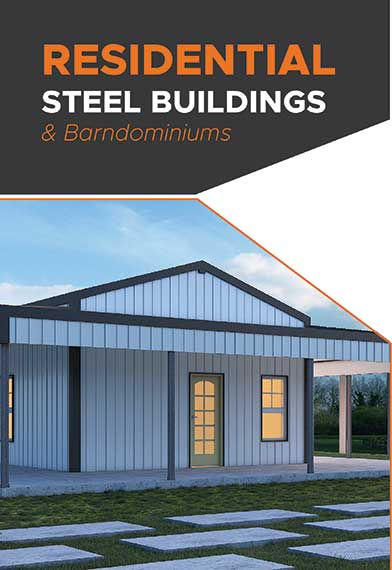Winners Announced in the ET Foundation 2020 Aluminum Extrusion Design Competition
- August 3, 2020
- Posted by: Alan Hageman
- Category: News

Winning entries in the ET Foundation’s 2020 International Aluminum Extrusion Design Competition have been announced on the website at ETFdesign.org. The competition attracted 25 professional entries and nearly 130 student entries from nearly 20 countries around the world.
Professional designers, manufacturers and students were awarded a total of $27,000 in the 2020 Aluminum Extrusion Design Competition, which included two classes of competition: Student and Professional. Student scholarship awards totaling $15,500 were sponsored by Bonnell Aluminum; $6,000 in Professional awards and a Grand Prize of $5,500 were sponsored by the Aluminum Extruders Council (AEC). Winning designs included a portable isolation unit for hospitals, a convertible bed/cart for refugees, a lightweight bridge decking system, a new generation camping trailer, and more.
The entries were reviewed and evaluated by aluminum extrusion industry professionals, including David Asher, Process Optimization Manager for Bonnell Aluminum in Newnan, GA; Todd Boyer, Director of Sales & Marketing for Mid-States Aluminum in Fond du Lac, WI; and Dr. Joseph Benedyk, Editor of Light Metal Age magazine and aluminum industry veteran.
Students Use Aluminum Extrusions to Solve Real-World Problems
Student winners in the 2020 Aluminum Extrusion Design Competition used their own experiences and real-life challenges to inform their design process, using aluminum extrusions to develop innovative products that solve problems.
Grand Prize
The Grand Prize of $5,500 was awarded to Filippo Tomasi, of Treviso, Italy studying design at Royal College of Art in London, UK, and Paola Zani from Brescia, Italy studying design at Politecnico di Milano in Milan, Italy, for their Ippocrate – Portable Isolation Unit for Emergency Situations.
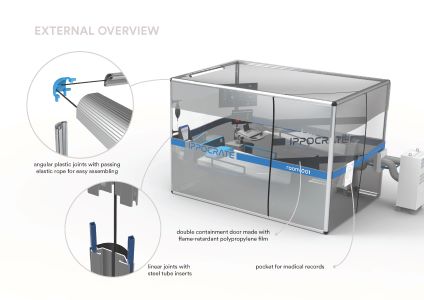 Their design was developed out of a desire to help provide relief for hospitals during the coronavirus pandemic, which affected their home country of Italy especially hard. The students will share the $5,500 Grand Prize award.
Their design was developed out of a desire to help provide relief for hospitals during the coronavirus pandemic, which affected their home country of Italy especially hard. The students will share the $5,500 Grand Prize award.
Aluminum’s light weight and the modular design makes the Ippocrate an easily portable and adaptable solution for hospital overflow environments and emergency situations. The units can be scaled up due to the modularity of the design by constructing the rooms side-by-side, removing the divider walls and joining the profiles with a clip.
“In the age of ‘Covid’ this is a great concept,” said competition judge Todd Boyer. “Of all the Covid-referenced projects [submitted in the competition this year] this seems [to be] the most applicable [and] real.”
First Place – Student
First Place in the Student Competition, with a $5,000 scholarship, was awarded to Emma Jacobs, Sherwood, Ore., who is a biomedical engineering student at the California Polytechnic State University in San Luis Obispo, CA, for her Quixet kick plate for swimming pool racing platforms. Explaining her reasoning behind her design, she noted that starting blocks are used by swimmers to dive into the pool for swimming competitions. Having been a competitive swimmer in high school, and now in college, Jacobs noted that her high school did not replace the starting blocks after the regulation change in 2008 due, in large part, to the financial burden. Suspecting a similar experience by other schools across the country, Jacobs decided to design an adjustable pool starting block that could be retrofitted onto an existing platform, saving schools the cost of replacing the entire starting block.
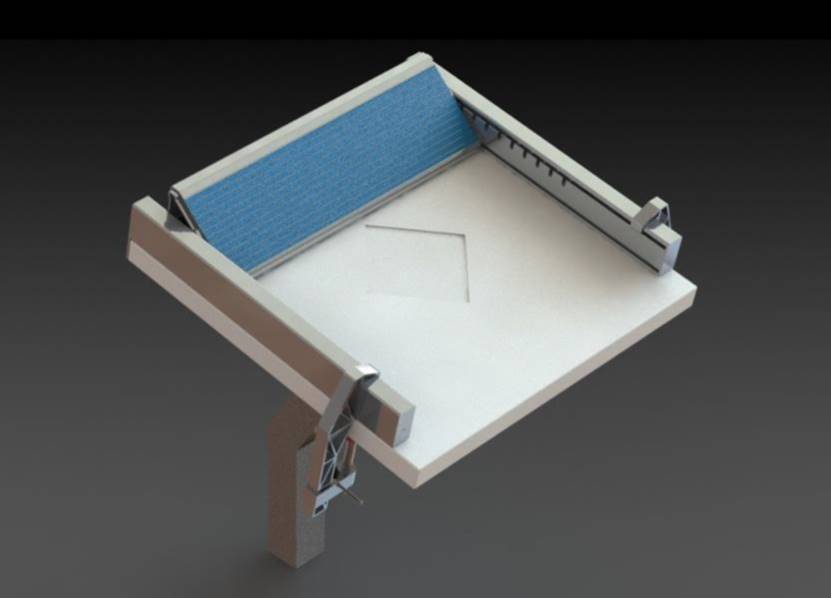
The design consists of two side rails, two inner wedges and an outer wedge, all made of aluminum extrusions. The inner wedge is secured to the outer wedge using a fastener along the bottom, similar to the way a T-nut is used in the 80/20 building system. The two wedges inside the larger wedge can be moved to adjust the width of the entire assembly. The outer wedge has a non-slip surface applied to it.
Second Place – Student
A team of four students from L’Ecole de design Nantes Atlantique (Studio Montreal) in Montreal, Canada, won Second Place for their HAUL Cargo Bike. Paul Poirier, Bastien Adam, Malo Sahores, and Clément Moinardeau each will share the $4,000 scholarship award.
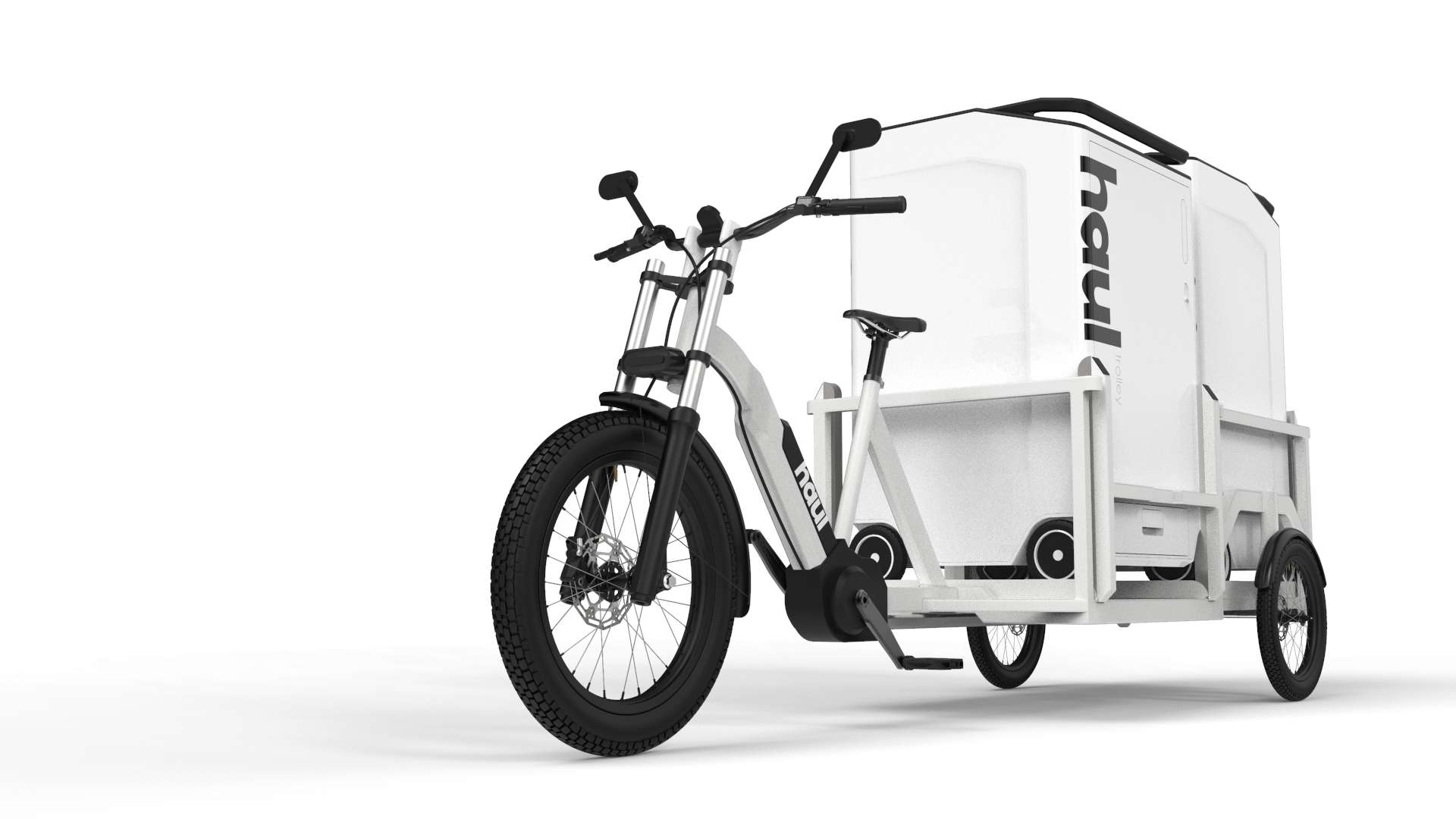
Their HAUL project focused on helping the City of Montreal to reduce traffic congestion and pollution. The team developed a cargo bike with modular crates to optimize the work of delivery people “for the last kilometer delivery”. The use of extruded aluminum forms the base of the bike and boxes filled with parcels rest on the base. The system allows rapid loading and unloading from small parcels to larger packages.
“The extrusion designs facilitate easy handling of various sized crates and packages,” said competition judge Joe Benedyk. “And, by replacing delivery trucks, the design offers a pollution solution.”
Third Place – Student
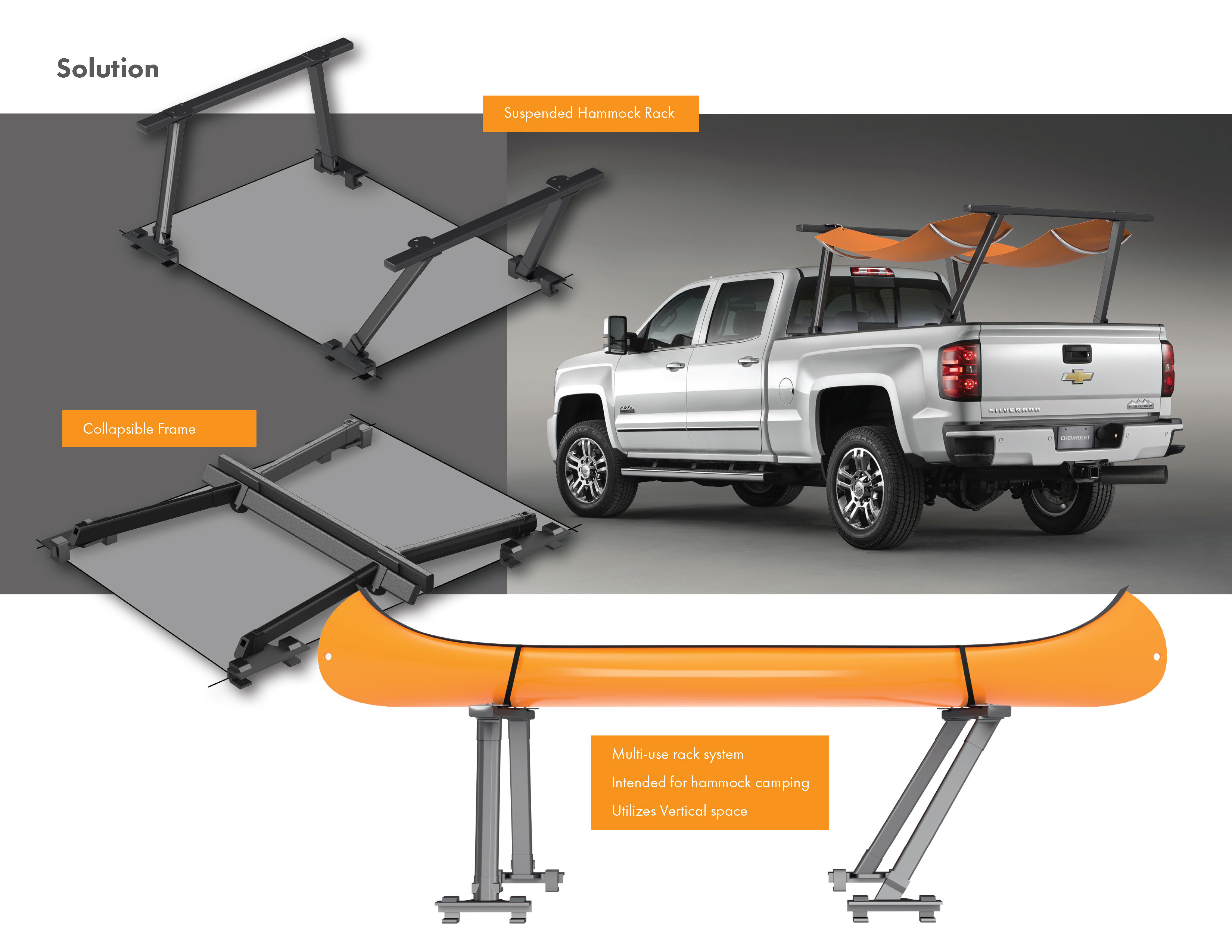
Jacob DeGroot, a student studying Industrial Design at the University of Wisconsin – Stout in Menomonie, WI, was awarded Third Place, earning him a $3,000 scholarship for his design of The Wissota, a hammock system that efficiently utilizes space for campers who want a new recreational experience using their vehicle. The collapsible hammock rack uses limited parts and simple geometry to offer a design that covers a rapidly expanding market, according to the student.
Bonnell Sustainable Design Award
Alejandrina Hernandez Zavarce, a student studying Industrial Design at Dawson College in Montreal, Quebec, won the Sustainable Design Award with a $3,500 scholarship prize for her Cart/Bed for Refugees.
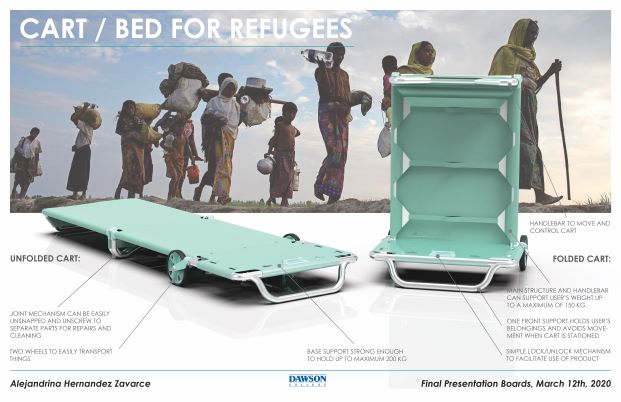
Zavarce used her and her family’s experience as they fled their home in Venezuela in 2015 to inform her design. She shared her story with Dawson College’s news editor, who posted it on the school’s website. “Near the Venezuelan/Colombian border I watched many people walking on the highway trying to cross the border into Colombia, looking for a better future for their family,” the student recalled. “It was shocking to see each member of the family, including children and old people, carrying their belongings, then resting and sleeping on any surface,” she said.
The student’s multifunctional design provides a way to carry one’s belongings and then converts into a bed. “In the market there are products to carry belongings, such as backpacks, wheeled luggage and carry-ons, which are not very comfortable for long distances and do not fulfill the role of a bed,” noted the student. Her cart/bed for refugees fulfills both tasks. The design uses one simple extruded tube profile for the support structure and the handle, making it a cost-effective solution.
Professional Winning Entries Showcase Extruded Aluminum’s Advantages
Nearly 30 entries from professional designers and manufacturers from around the world were received in the Profession Design Competition. Three prizes were awarded in two categories, Structural and Transportation, with two winners being recognized in the Transportation Category.

First place in the Structural Category, with a $2,000 prize in the Professional Aluminum Extrusion Design Competition, was awarded to Alexandre de la Chevrotière of MAADI Group, Inc. in Montreal, Québec, Canada, for an all-extruded aluminum bridge deck. The GuarDECK system maximizes functionality and minimizes environmental impacts with a pedestrian walkway that is built onto a new or existing bridge, providing safe access for pedestrians and bicyclists and reducing traffic congestion, according to the designer.
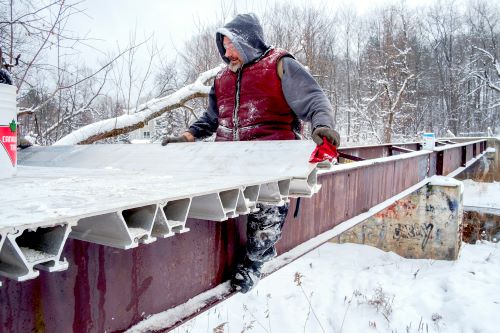
GuarDECK uses Accelerated Bridge Construction (ABC) principles with weld-free and off-the-shelf components, which can be shipped in bundles on short notice. GuarDECK “attaches to steel main girders without any need for drilling or welding on site thanks to extrusions,” noted Chevrotière. A team can install the weld-free aluminum deck and open the bridge to traffic later that same day, fitting well in most environments and situations where durability and rapid installation are top priority. The GuarDECK system is ideal for numerous uses, including pedestrian, 15-ton vehicle, temporary, military, and industrial applications. The bridge deck can also extend a roadway bridge for use as a cantilevered bike path.
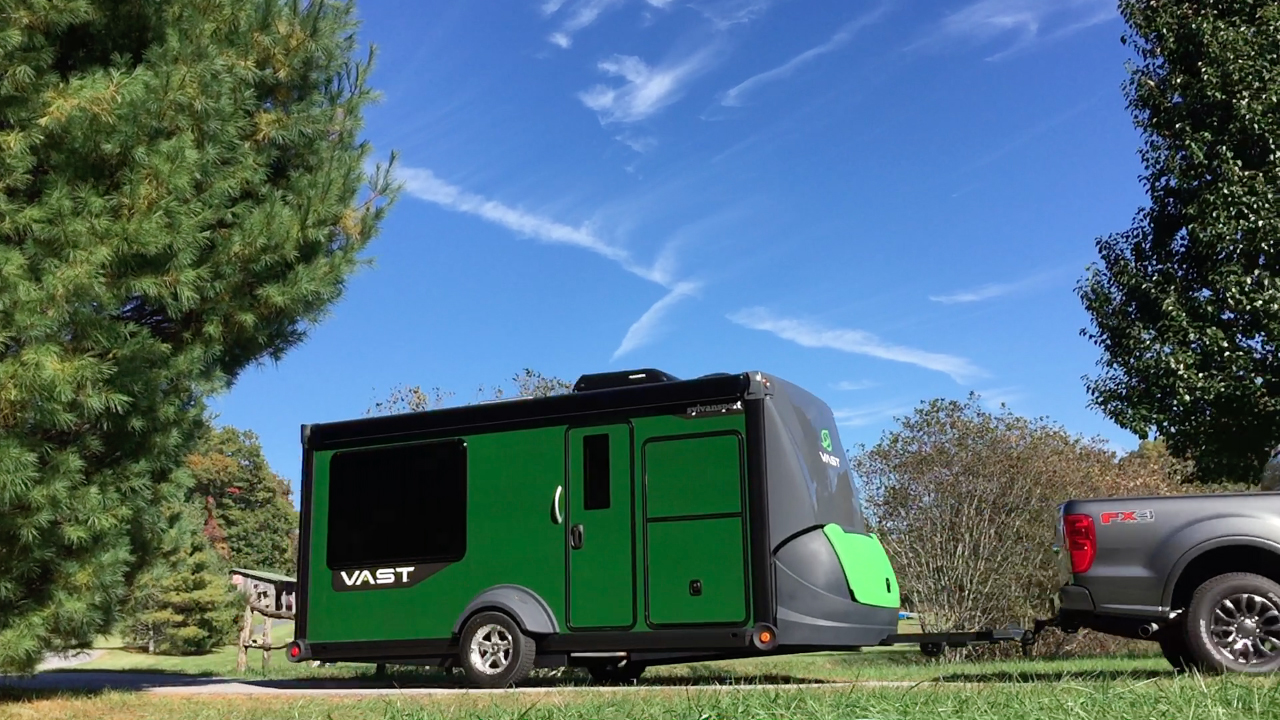
Building on their success with the GO camper/trailer, a Grand Prize winner in the 2008 Aluminum Extrusion Design Competition, Industrial Designer Ryan Bush and the team at Sylvan Sport developed the VAST RV camping trailer with extensive use of aluminum extrusions, earning the company a $2,000 prize in the Transportation Category. An innovative all-seasons kitchen, a first for the RV industry according to the company, allows the camper to enjoy cooking meals indoors or outdoors with their patented easy slide technology. The side-mounted rack system features extruded aluminum built-in rails that turn the entire side of the R/V into storage for kayaks, canoes or paddleboards. Protected storage for propane tanks, batteries and a spare tire is mounted in a front pod that slides forward on extruded aluminum rails.
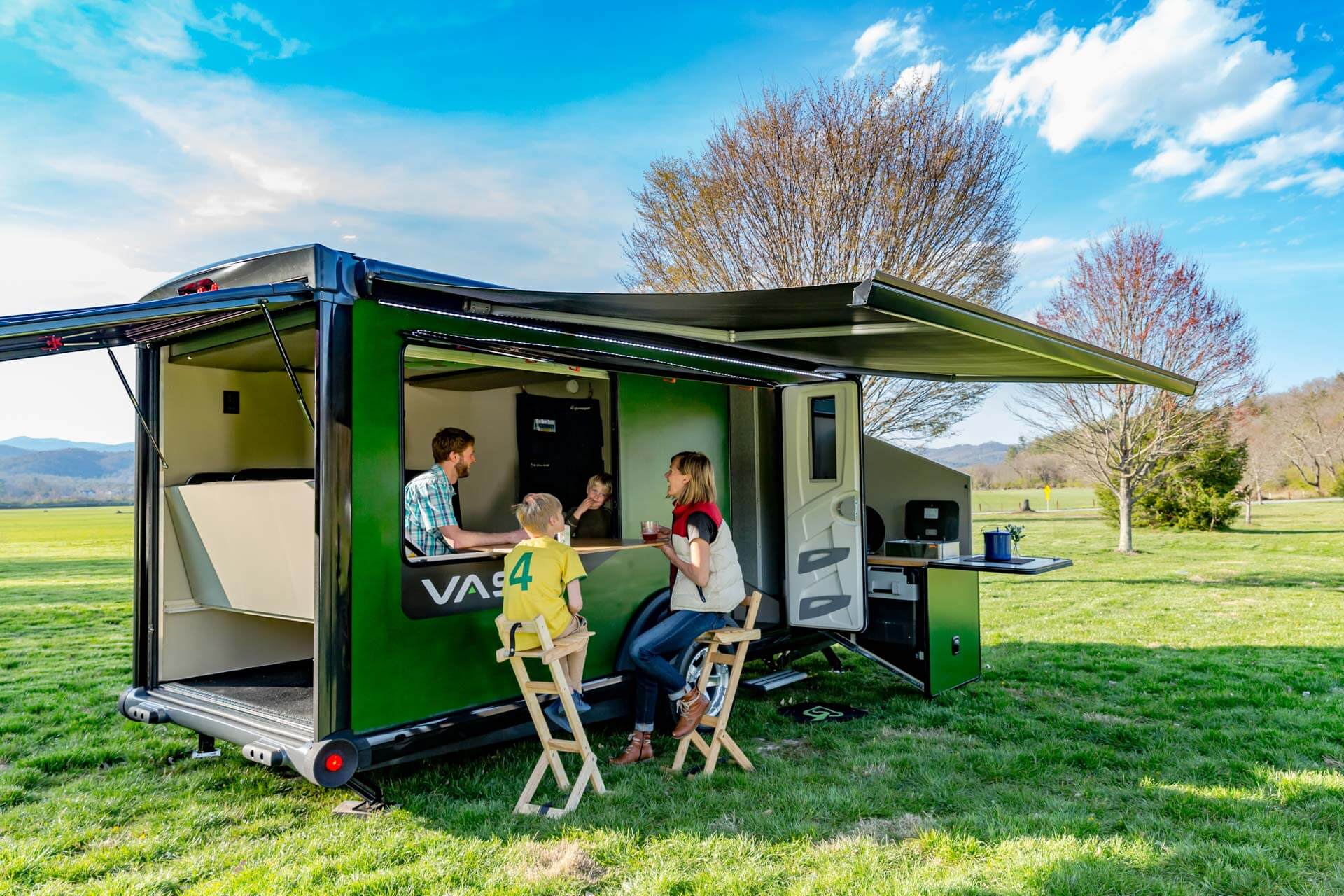
“The VAST is made up of composite panels, which are completely aligned and held together using aluminum extrusions,” noted Bush. “The aluminum extrusions allow us to keep the total weight under 3,500 lbs. while maximizing strength for durability and road safety.” A 15-foot-long, 8-inch-tall extrusion clamps down on the roof panel and locks tightly into a vertical extrusion to keep the box aligned. The outer shell is constructed using a custom composite skin, laminated to an insulated wall structure, which in turn are joined to the proprietary extruded aluminum frame. The corners are double-capped for maximum waterproof protection.
A second Transportation Prize was awarded to Marc Senger, an Industrial Design professional, located in Weymouth, Mass., who designed the “GRIDFLEX Light Utility Truck” and extruded aluminum universal mounting system for light utility vehicles, which earned him $2,000. The mounting system is designed to “enhance contractors’ abilities to adapt their vehicle to a multiplicity of functional needs,” Senger noted explaining his entry. “Extrusions allow high-strength yet lightweight features, which accept ‘task modules’, which may be repositioned anywhere along the extrusion. This allows ultimate flexibility when outfitting and using the vehicle.”
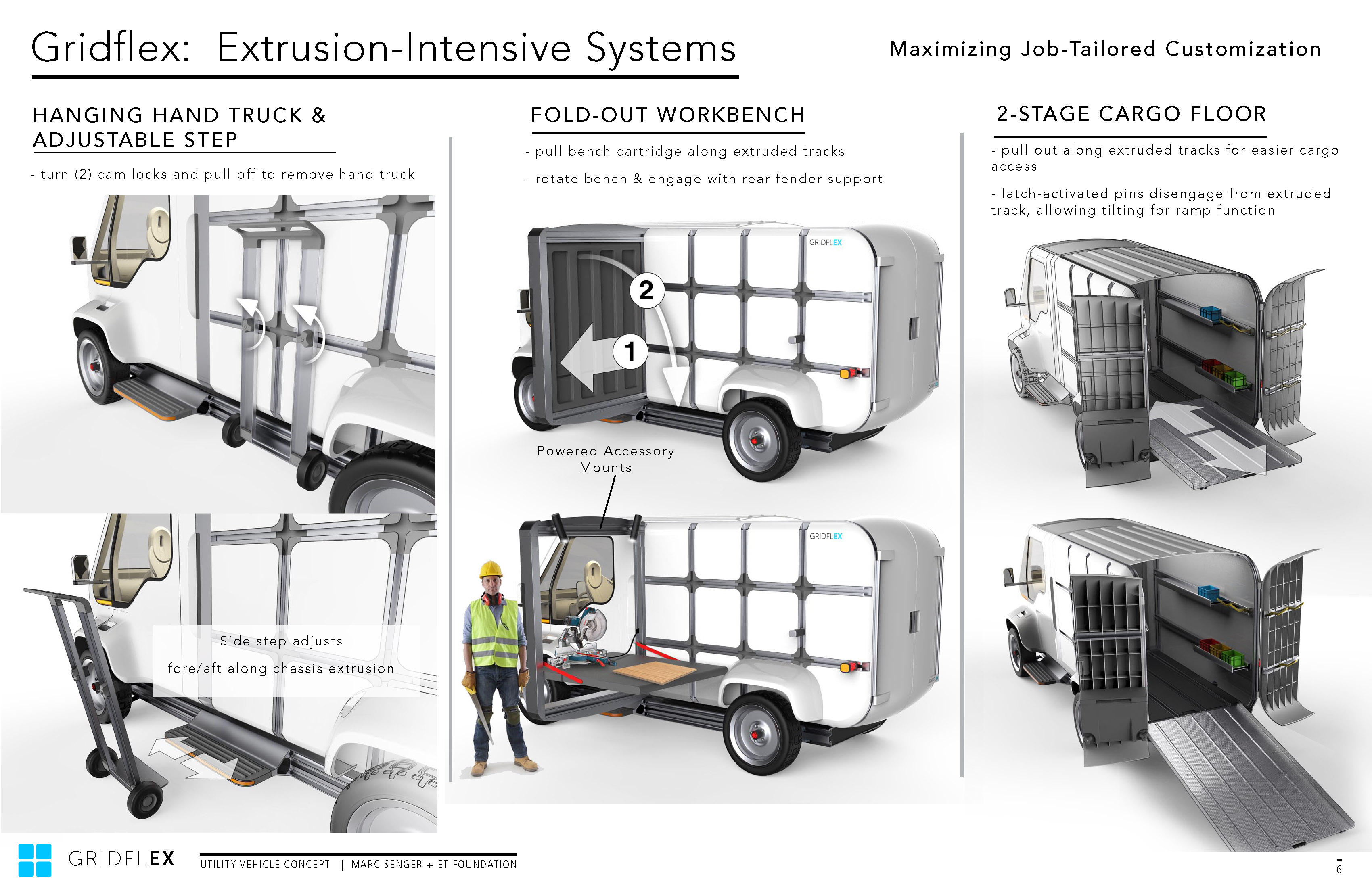
His GRIDFLEX Versatile Light Utility Vehicle utilizes the grid system, which includes a variety of features suited for the diversity of applications needed by contractors, including a slide-out workbench, convertible cargo roof, a two-stage cargo floor for easier loading/unloading, a low-profile extruded sliding chassis that houses the electric drivetrain and batteries, and an electrically powered grid to power the accessories anywhere along the entire system.
For more information on the winning entries and for announcements on future competitions, visit ETFdesign.org. The ET Foundation and the Aluminum Extruders Council congratulate the winners and thank all of the professional and student designers who submitted entries, with special thanks to the students’ faculty advisors for advancing aluminum extrusion education by supporting the Competition through the classroom.

